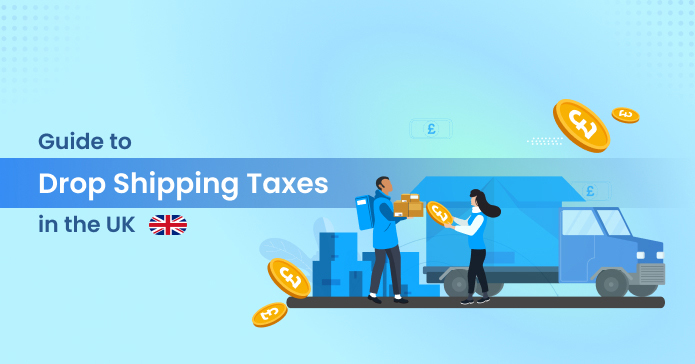Dropshipping is an appealing e-commerce strategy for entrepreneurs looking to enter the retail space without a significant upfront investment in inventory. In the UK, this business model has gained traction for its efficiency and scalability, allowing business owners to act as intermediaries between suppliers and customers. However, navigating the tax implications of a dropshipping business can be daunting. This guide aims to demystify the tax affairs of dropshipping in the UK, offering guidance and insights from industry experts.
What is Dropshipping?
Before we plunge into the details of taxes, it's crucial to clarify what dropshipping entails.
In essence, dropshipping is a retail fulfilment method where a store doesn't keep the products it sells in stock. Instead, when a store sells a product, it purchases the item from a third party and has it shipped directly to the customer. This model significantly reduces the capital requirement to start a business, as there's no need to invest heavily in inventory or warehousing.
The seller has zero contact with the order in essence. This signifies a phenomenal advantage of DropShipping over general inventory management. The advantage is the ability of the seller to optimize their business operations. Additionally, businesses with limited warehouse space can now venture into selling larger items. Furthermore, the selling of seasonal merchandise can be done without fear of having unsold stock.
What Type of Taxes Do You Pay for Your Dropshipping Business
Ascertaining the taxes you need to pay can appear overwhelming, particularly for novice entrepreneurs. However, it's crucial to realize the key taxes your business should be familiar with initially. These may vary based on the nature of your products or services and the progress of your venture, thus other tax responsibilities may arise.
Value-Added Tax (VAT)
At present, the prevailing VAT Benchmark stands at 20%, applicable to a majority of goods and services. Certain items and services - for instance, car seats for children – come under a lesser 5% rate, while a null rate is enforced on most food items, and clothing for children.
For entities involved in DropShipping, selling products worth £100 falling under the conventional rate implies a tax payment of £20, something to consider when setting your product prices. It is common practice for enterprises to factor in VAT into their product prices, along with elements like shipping charges.
Should your enterprise's gross income cross the threshold of £90,000 as of Budget 2024, so you might have to register for VAT. Post registration, you would receive a VAT number that should be transparent to your customers. Upon VAT registration, VAT payment on sale proceeds becomes mandatory – necessitating its inclusion in your pricing model.
Income Tax and Corporation Tax
Depending on your business structure, you'll be subject to either income tax (if you're a sole trader or partnership) or corporation tax (if you've incorporated your business).
Find out more about income tax and tax brackets here. The Corporation Tax rate is currently set at 19% and is paid on the business profits. For those businesses with a turnover of £100,000 or fewer, you can apply for an allowance to reduce your Corporation Tax payment. To learn more about the ways of reducing your corporation tax bill click here
Customs Duty
Customs duty is a tax imposed on goods imported from outside the European Union. If you're buying products from overseas suppliers, you'll likely be subject to customs duty and import VAT. Make sure to factor these additional costs into your pricing model.
Companies procuring goods from international markets might be subject to customs duties. The duty rate is set at 2.5% of the product cost, yet this is a complex process. Products priced under £135 are exempt from this duty, while items exceeding £630 may attract varying rates.
Calculating your Dropshipping Business Tax
Calculating your tax liability as a dropshipping business can be complex due to the various taxes and deductions involved. It's recommended to consult with a qualified accountant or tax advisor who can help you navigate through the process and ensure that you're meeting all of your tax obligations.
We recommend using HMRC`s website to acquire a healthy estimation.
The Pros and Cons of Dropshipping
Advantages:
- Low Startup Costs: Compared to traditional retail, the initial investment required for dropshipping is minimal.
- Flexibility: With no need to manage inventory or warehouses, you can operate your business anywhere with internet access.
- Scalability: You can easily expand your product offerings without significantly increasing operational costs.
Disadvantages:
- Thin Margins: Because of the competitive nature of dropshipping, profit margins can be slim.
- Dependence on Third Parties: Your reputation can be impacted by suppliers' mistakes, over which you have little control.
- Complex Tax Obligations: Navigating the tax landscape requires diligence and sometimes expert assistance to avoid pitfalls.
Conclusion
Dropshipping business is a perfect match if you start small in the "delivery industry" and grow bigger like Ali Express, Inspire Uplift, Salehoo, Brookstone etc. The tax affair, albeit similar to any other business, includes some of the specific mentioned above. Being versatile taxation rules , the tax system is prone to changes in the future. Thus, it's essential to stay updated on any changes that may affect your dropshipping business. Ultimately, with careful planning and proper management of taxes, a dropshipping business can be a profitable venture for entrepreneurs. So keep calm and sell on!













